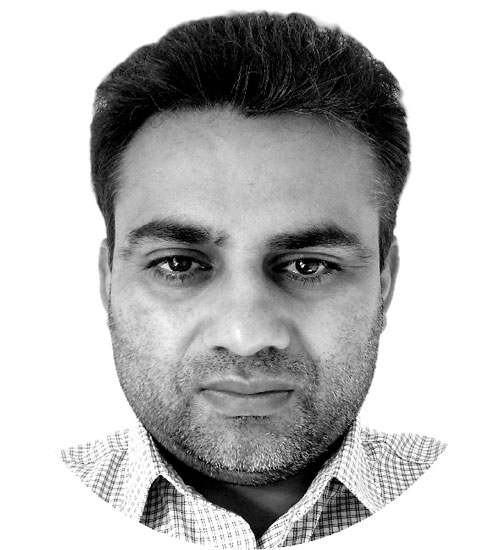Unveiling scars of Palestine!
THE Israeli West Bank barrier has been a spot of acute controversy, facing in ternational scrutiny since the construction began in 2002.
The building structure of the wall is surrounding the occupied Palestinian territories and cuts through families, communities, water resources and commute routes, inflicting spatial massacre and segregation.
The wall stands three times the height of the Berlin Wall and will eventually run for over 700 Kilometre the distance from London to Zurich.
For decades, Israel has been accused of actively engineering a Jewish demographic majority in the region through branding illegal policies, house demolitions and violence against the innocent civilians of Palestine.
In 2004, the International Court of Justice ruled the wall and its associated regime illegal and called on the UN to stop further building work on the wall.
However, Israel ignored this request to stop the construction. Perhaps, the controversy that surrounds the wall is what makes it such a perfect place for art to shed light on the ethnic cleansing and vicious massacres of Palestinians.
The disrespect to basic human rights has led many artists to demonstrate solidarity towards the Palestinians through art.
The most striking feature of the West Bank that caught my attention was the graffiti artwork of British street artist, Banksy. I am compelled to say, art has a spiritual instinct to paint the suffering and turmoil of a nation fractured by a conflict that can lead to happiness and freedom.
Banksy’s street art appears everywhere in the West Bank, mostly on the apartheid wall which spotlights military oppression of Israeli forces.
I am short of words as well as emotions over the killing of innocent civilians and the violent restrictions which refute the basic rights and freedom of Palestinians. However, I have felt the essence of solidarity and hope in the paintings of the West Bank.
Whilst struggling to hold my tears, the consoling artwork of the West Bank pumps emotion, happiness, tranquillity and even anger. Either way, it serves the purpose, to unveil the scars of Palestine.
Notably, most of the artists have used children in their work on the West Bank as a symbol of our future, kids captivate our attention to shake up countries particularly about the recent escalation of violence and Israeli airstrikes on Gaza.
It also gives children a voice in telling the Israeli government that it is never too late to improve.
To be fair, the graffiti work of the West Bank echoes commentaries on the social order and brutality of the Israeli Government that is overlooked by the International community and features the matchless suffering of Palestinians.
For example, the controversial ‘Donkey Documents’ mural, painted in 2007 in which an Israeli soldier asks a donkey for its ID in one piece.
The irony behind this painting is to recount the Jewish state’s strict security measures that have paralysed normality. Another most famous Banksy’s image is the “West bank Guard” which perfectly displays the tension in the region.
In this painting, a little girl frisking a soldier depicts the innocence of children everywhere, caught in the middle of political discord.
Moreover, to highlight the plight of Palestinian Children, Banksy created a mural showing them swinging from an Israeli military watchtower as if it were a swing carousel.
It was a gripping message to Israel and the whole world that Israeli wars in Gaza left nobody safe, including Children.
Similarly, Banksy created another masterpiece of the young girl looking upwards, floating, suspended above the ground only by balloons.
This could represent hope; hope that one day the Palestinians will be able to overcome the segregation imposed by the barrier that stands in their way.
The girl is a child perhaps signifying that it will be the children who will overcome these obstacles in the future.
In reality, decoration of the West Bank barrier is extensively held up as a candid expression of political activism in support of ‘the Palestinians’ and the advancement of human rights.
Today, million’s feel inspired by the West Bank art which carries influence and educational value to the public eye.
Banksy and other artists included objects pre-existing in the deserted streets, smashed roads, and bombed structures of Palestine, to deliver their message by crafting a striking art that encompasses the suffering and trauma of the Palestinians.
The presence of art on the West Bank has not only impacted Palestinians, torn apart by brutal war but also influenced human rights defenders, ultra-Powerful lobbies, and freedom movements, to orchestrate revolutions to end the extermination of Palestinians.
What we do in life echoes in eternity, we need to think about the impact we can have on the world and how peace can be restored and preserved.
The West Bank art has become a powerful ally to the Palestinian people since the paintings of local and international artists have shown the world a humanistic side of their struggle under the siege of the Israeli occupation.
In our increasingly disorientated world, the arts play a crucial role in determining the character that defines us and reminds us of our shared humanity.
The different artistic expressions on the West Bank remind us all to stand up with Palestine to hope, to love and to speak up. No more walls!
—The writer is senior columnist based in UK.










